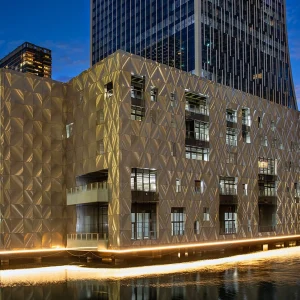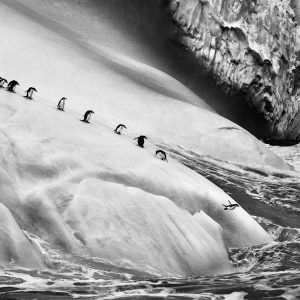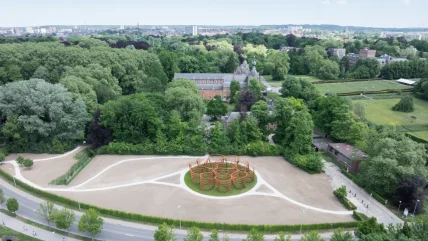
THERE ARE OLDER universities in the world – Oxford and Cambridge, for example, have clocked up over 1,000 years apiece – but none that I know of that would mark a significant milestone by throwing a party for the host city and all its citizens and visitors.
KU Leuven turns 600 in 2025. To celebrate six centuries of (almost) uninterrupted commitment to education, to fostering curiosity and wonder, and supporting excellence and innovation across the humanities and the sciences, the university has spent substantial sums on a festival that infuses this multi-layered history into permanent works of public art and poetry.
Leuven has a lower profile than it Belgian peers – your typical tourist hit list would probably feature Brussels first, or Bruges, Antwerp and Ghent, before Leuven. But what a revelation when we start to explore this city: its medieval streets are filled with treasures – not quite as many medieval edifices as Bruges, admittedly, but still impressive. And the university seems to have the lion’s share of these significant buildings, including Arenberg Castle, which was built in the 16th century by William II of Croÿ and Maria of Hamale. After World War II, it was acquired by the university, along with the surrounding parklands, creating a splendid and tranquil setting for students and an anchor for its new science campus.
Appropriately, they have given this fine building to the departments of architecture, conservation and engineering. It’s here that we meet one of the first of the works commissioned for Leuven’s celebrations: The Wandering Garden. Architects/artists Gijs Van Vaerenbergh devised a structure inspired by the classical mazes often found in castle landscapes, its Corten steel curves waltzing around the lawn, in place of what used to be a staff car park. But this is a collaborative project, with botanists from the KU Leuven Plant Institute, so around its base are 100 different species of climbing plants, from wisteria and honeysuckle to grapevines. Over the years, as the plants evolve, this structure will transform. Apparently, the ‘wandering’ in its title refers to a speech by former chancellor Pieter De Somer, in 1985, about academic freedom to conduct research without interference from the state or any other entity – a more timely and welcome sentiment now than he could possibly have realised then.
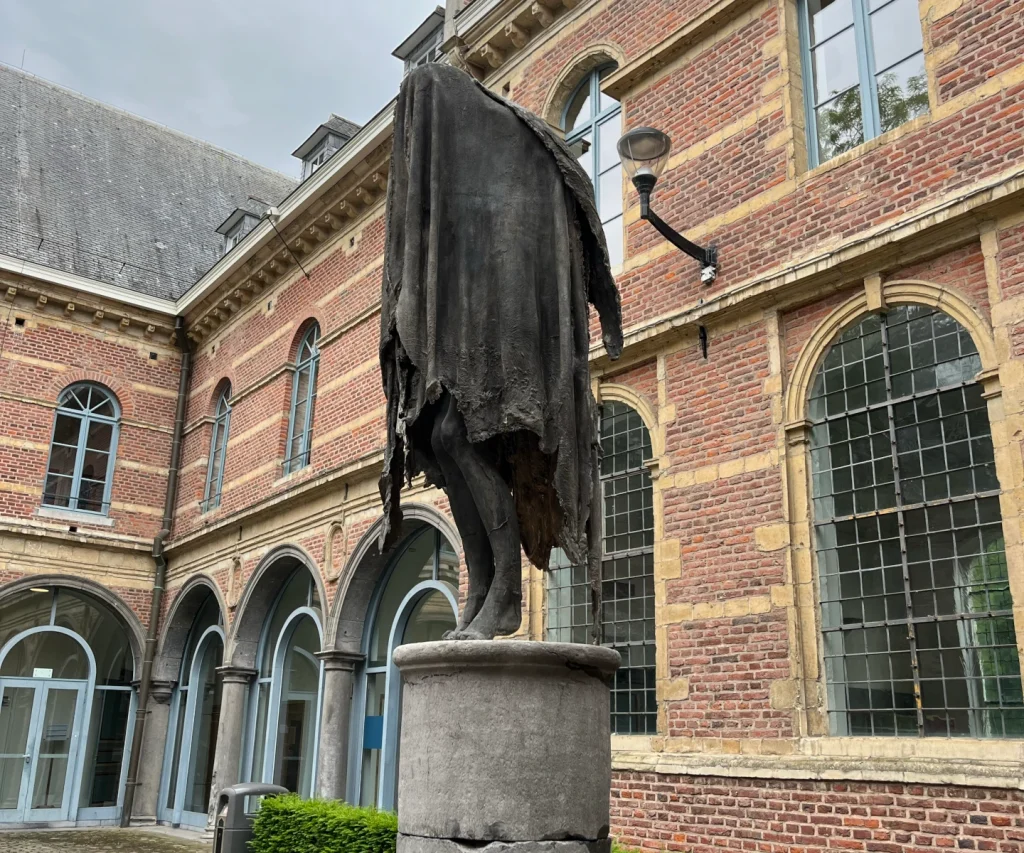
This work marks the start of the route, which finishes with a poem What It Is by Maud Vanhauwaert, one of the trio of curators, which meanders across the building housing the Institute of Philosophy. Fourteen further interventions are woven around university buildings old and new – though mostly old. Luckily, these buildings are spread all around the city’s medieval core, so any casual visitor will receive a welcome education about both the city’s and the university’s evolution as they follow the tours (either self-guided or in person). This ambitious programme has been co-curated by Heidi Ballet, who previously curated the Beaufort Triennial, the aforementioned Vanhauwaert, and KU Leuven’s Professor of Philosophy Stéphane Simons.
It’s a balance between visual and verbal, the latter specially commissioned poems variously wrapped around the façades of buildings, stretched along a courtyard path or placed in an alleyway. The poems are in Belgian so I can’t vouch for them in the original language, but I enjoyed Ballet reading them aloud to our multilingual group, in English translation. The whole project is a laudable exercise in co-creation, as our curator hosts outlined. Simons told us: ‘Dialogue between artists and scientists is ideal for reflecting on societal challenges.’ What they have in common is ‘experimentation, creativity, creation’. There is also that quality of wonder. The tension between the two disciplines can also be productive, he said, with ‘scientists (being) usually experts in a narrow field and results-driven. Artists are more likely to see problems and challenges and seek solutions through dialogue.’
Dialogue was a key part of the work’s evolution. First the curators quizzed over 70 of the university’s top scientists on science’s evolution and its contribution to society’s challenges. Their list of themes included: the nature of resilience, what makes a human (what is artificial, what is ‘natural’?), medicine for all, and who ‘owns’ knowledge and to whom is it owed? One chosen artist and one poet were then gathered together with smaller teams from diverse disciplines to workshop these ideas and inform their responses.
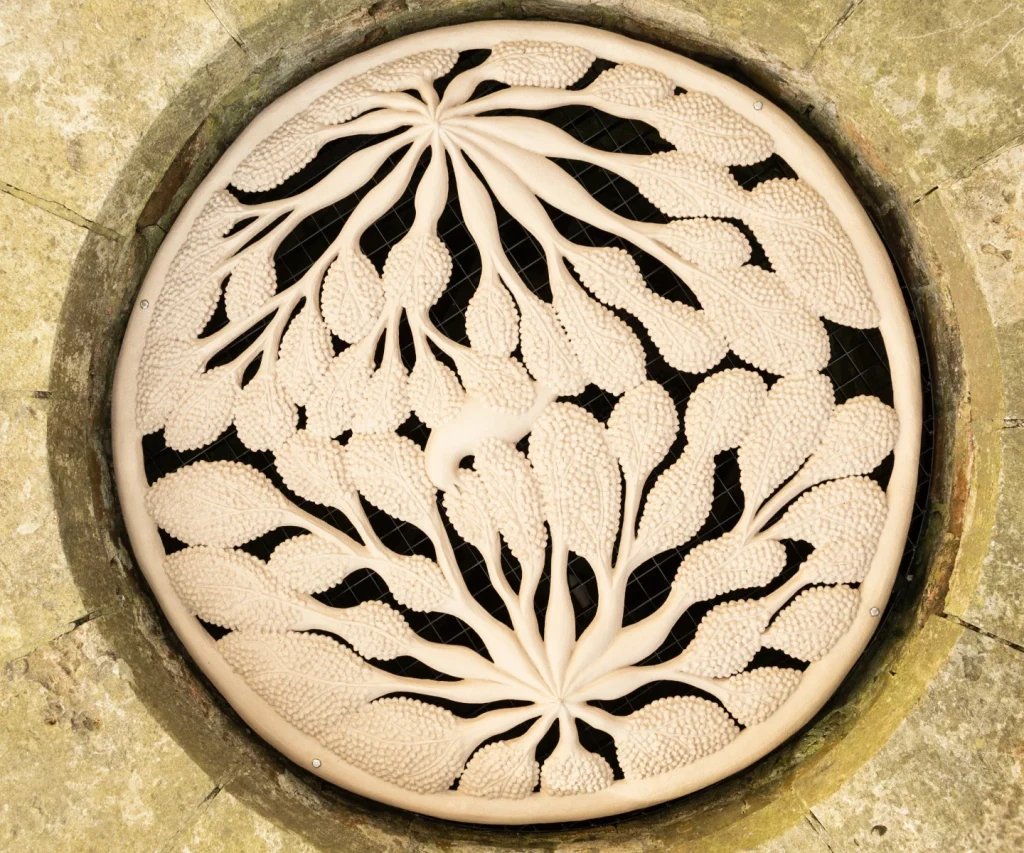
Highlights included Congolese artist Sammy Baloji’s monumental record of the sinister extractive relationship between his two homelands (he now lives in Brussels). Kibawa’s Little Boy is an inky black sculpture in the shape of a crystal in which uranium is formed (uraninite), a mineral that the Belgians mined extensively in the Katanga region, prior to independence. This was the uranium used by the US for the first atomic bomb (hence the title Little Boy, the nickname of the first atomic bomb). In 1954, KU Leuven founded a sister university in Leopoldstad (now Kinshasa), and its first chancellor was a nuclear scientist (Luc Gillon), who had the first nuclear reactor in Africa built on that campus. Embedded inside this split ‘crystal’ shape Baloji has placed a golden image of a traditional Mayombe funerary figurine, referencing the widespread colonial practice of appropriating these figurines for Belgian museums (the university itself has some), as an icon to represent the ‘primitive’ knowledge of Africa in contrast to that of Europe. Who owns knowledge, and to whom is it owed, indeed?
Berlinde de Bruykere, one of Belgium’s most famous sculptors, has contributed one of her profoundly moving Arcangeli. A bronze figure – its legs visible and remarkably fleshlike, its upper body shrouded in a blanket, appears to be either lifting off or landing, carrying the troubles of the world on its stooped shoulders – it is part of a series De Bruykere devised during the pandemic, as a tribute to those who died as well as those who cared for them. It is placed in the forecourt of a building used for student healthcare support.
There were four sculptural interventions by Clara Spilliaert (Listen Well) in the elegant, cloistered grounds of the Great Beguinage. Beguines were communities usually built by wealthy women when their husbands were away at war, lasting from the 13th to the 20th century. These communities supported women living independently but also dedicated to caring for the poor and the needy, without the rules and restrictions of women living in convents. (I had no idea such communities ever existed. How delightful to find such resilience, and generosity, at a time when women had few options except those afforded by a husband or father.) This beguinage is now mostly occupied by postgraduates. There are four medieval wells here, on top of which Spillaert has placed ornate bronze covers, designed to represent layers of the female chest – first the skin, then the mammary glands, then the lungs and finally the blood vessels – the latter right at the centre of the community.
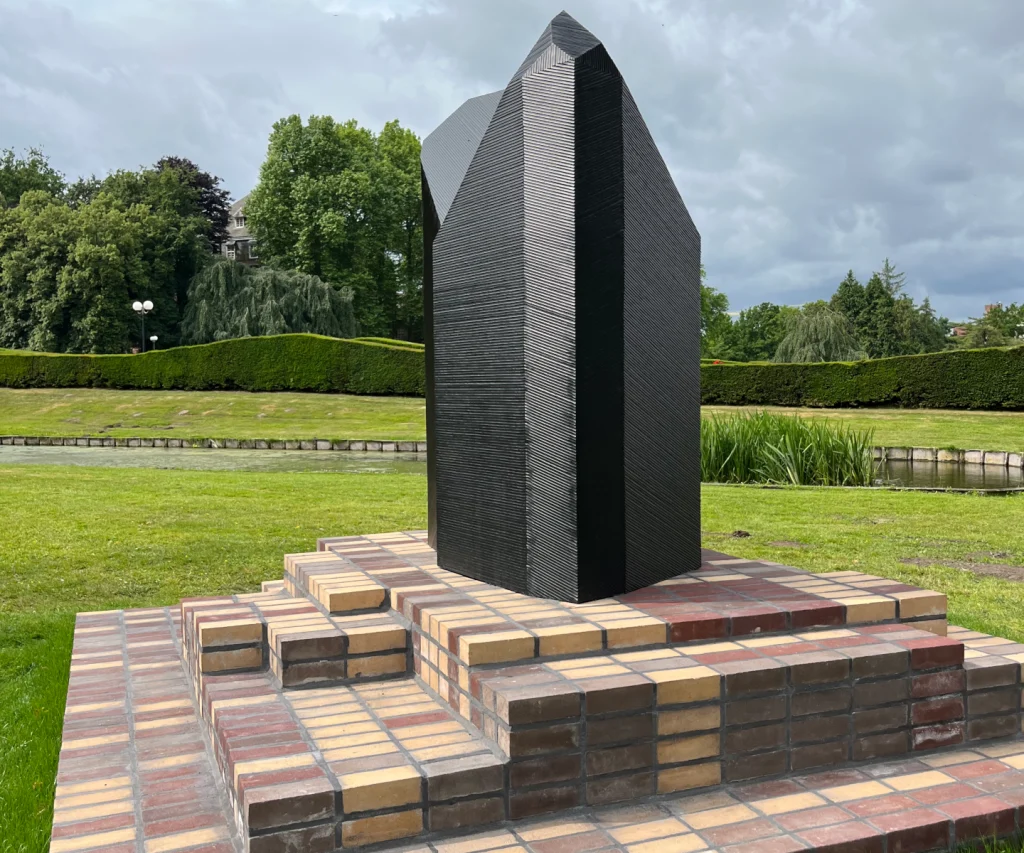
With reference to only these few works it is apparent how skilfully this public art festival in Leuven works to educate and enrich our understanding of the city’s history and its legacies, opening our minds to other eras, other ways of living. As a footnote to our visit, we’re told that with it being Belgium’s turn to nominate a European Capital of Culture, Leuven is on the shortlist for 2030. The winner will be announced in September after FX has gone to press. I would be surprised if the other shortlisted cities had come up with a better demonstration than this of their ability, and eagerness, to make the most of that opportunity.
KU Leuven’s festival And So Change Comes in Waves continues throughout 2025. For details visit kuleuven.be/600years/schedule/and-sochange- comes-in-waves


